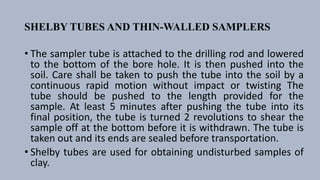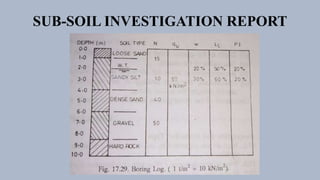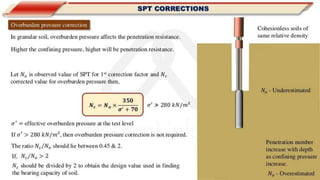The document summarizes the key aspects of subsurface investigations for engineering projects. It discusses the purposes of site investigations, planning exploration programs, common exploration techniques like boreholes and sampling methods, and how to document and report the findings in a subsurface investigation report. The goal is to efficiently obtain essential subsurface data to inform foundation design and construction methods while minimizing costs.















































